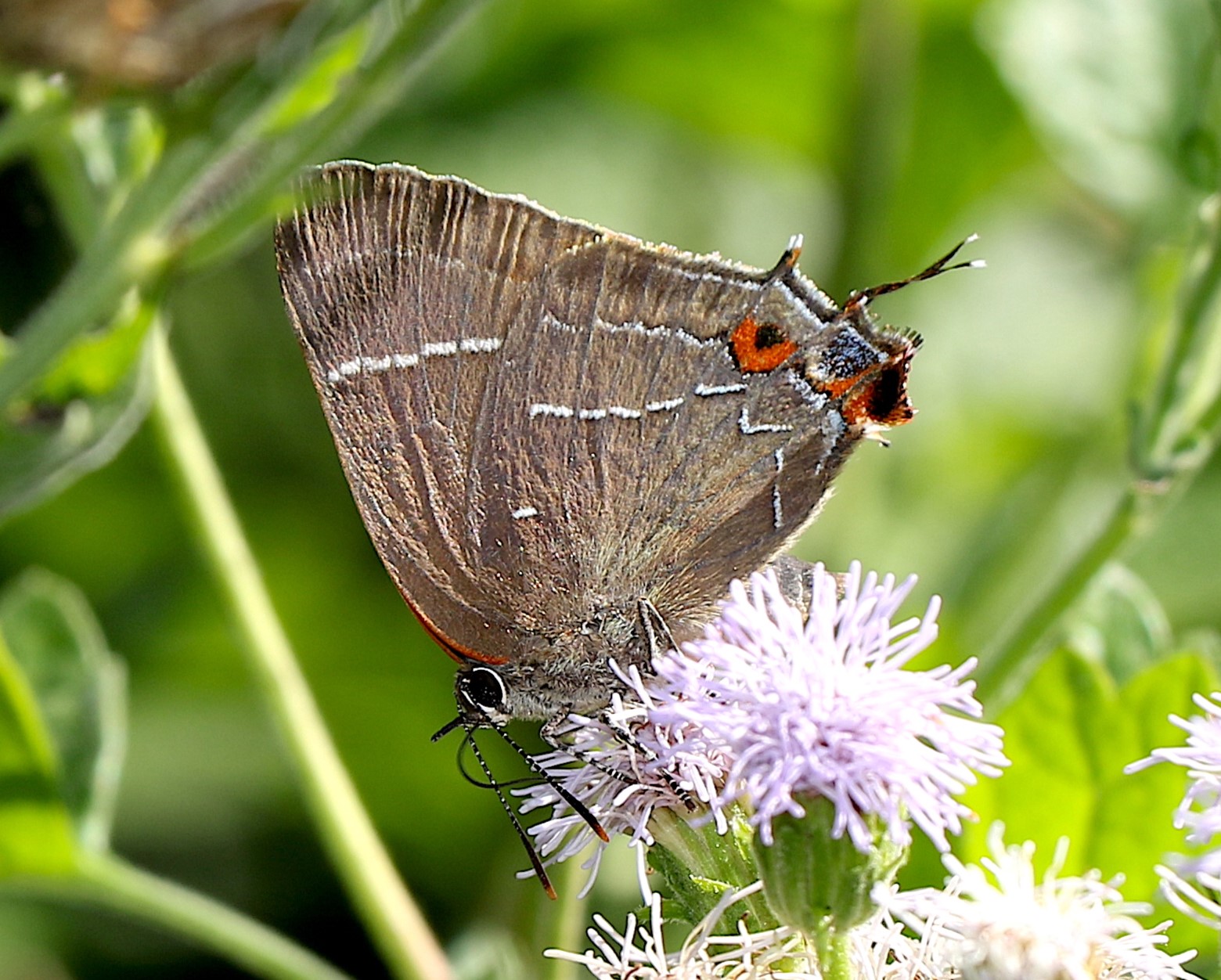
Although butterflies are a familiar sight at the National Butterfly Center in Mission, a rare species like the one recently found residing among its other butterfly friends is something special.
Earlier this week, two visitors from New Mexico took a photograph of what would become the first U.S. record documenting the Mexican M Hairstreak butterfly at the butterfly center in Mission, the organization said in a news release Friday.
Anisha Sapkota and Sajan KC, who are pursuing a Masters degree in Biology and are butterfly enthusiasts, if you will, decided to spend their winter break in the Rio Grande Valley visiting the butterfly center.
They wanted to learn about the species common in the Valley during the winter season.
According to Mariana Trevino Wright, executive director of the center, it is common for visitors to reach out for more information about the center. There was something about this pair, however, that was different, she said.
“But I’ve never had anyone declare they have already memorized all 700-plus species in Dr. Jeffrey Glassberg’s definitive ‘Swift Guide to North American Butterflies.’ I thought Sajan was joking when he told me this, but week after week, he’s proven he was not,” Wright said in the release.
Although weather patterns affect the butterfly activity in the area, the two were hopeful to see the variety of species at the center that they hadn’t previously encountered, otherwise known as “lifers.”
During their trip to the Valley, they have found 80 lifers and 128 butterfly species in total, one of which was the discovery of the Mexican M Hairstreak.
Discovering the rare species has only amplified their passion for these delicate creatures.
A rare find like the Mexican M Hairstreak happens once a year at the butterfly center, according to the release. In fact, over the past 20 years more than 240 different species have been documented at the center.
“Still, it’s part of the reason people travel here from around the world and return, again and again,” Wright said in the release. “There is simply no other place quite like it in the United States.”




